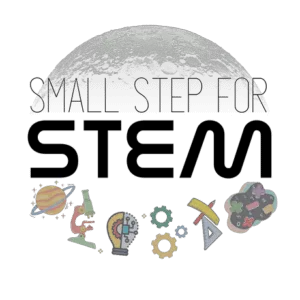Disclosure: this post contains affiliate links, which means I may receive a commission if you click a link and purchase something at no extra cost to you. Please check out our policies page for more details.
for more details.
Today’s experiment involves shapes, fine motor skills, and creativity!
Building shapes with popsicle sticks is a simple yet effective way to introduce kids to the world of mathematics. By engaging in this experiment with your child, you can help them develop a strong foundation in mathematical concepts while having fun and being creative.
This experiment is a fun, hands-on math activity (which is a great way to help your child learn). Learning about shapes with popsicle sticks allows your child to get creative while teaching about shapes and their properties.

How to make the Building Shapes with Popsicle Sticks math experiment
Supplies you will need
For this experiment, you will need the following:
- Popsicle or craft sticks

- Glue

- Marker or pen

Before you start
If you choose to use a hot glue gun, please be mindful of the hot glue around your child.
Instructions
Here is how to do the Building Shapes with Popsicle Sticks experiment with your toddler:
Step 1: Build a few basic shapes together

To begin, we will be building our shapes together so your child can get the hang of it.
Start with building a triangle together. Grab three popsicle sticks, form a triangle, and glue the ends together. Talk through how you made it, how many sides it has (or how many sticks it took to build it), and ask them to name the shape.
Step 2: Label your shapes

Once the glue is dry, use a marker or pen to label each shape with its name.
If your child is new to letter sounds and reading, this is a great opportunity to sound out the letters that make the shape! If they are familiar with their shapes and new at reading, this will help them learn how to sound out the letters to make the name of the shape.
Get your child involved: If your child knows how to write and spell, have them label the shapes. If not, sound out each letter of the shape together.
Step 3: Let your child get creative and build their own
Encourage your child to build their own shapes using popsicle sticks and glue. Let them be creative and explore different combinations of popsicle sticks to make new shapes.
They may need a little help and encouragement to get started, and that’s okay! If it helps them, you could draw out a few shapes on a piece of paper and have them build each shape with popsicle sticks.
Get your child involved: This step is all about them! Sit back and allow them to be as creative as they would like to be. If they need a little help, you can step in.
Step 4: Talk through the shapes

As they build different shapes, ask them questions to help them understand the properties of each shape.
For example, you could ask:
- “How many sides does this shape have?“
- “Could we make this same shape with more sticks? Does that make the shape bigger or smaller?”
Step 5: Group your shapes
Once your child has built a few shapes, ask them to sort them into groups based on their properties. For example, they could group all the shapes with three sides together or even measure the height of each shape and stack them by height.
and stack them by height.
The math behind the Building Shapes with Popsicle Sticks math experiment
This experiment teaches:
- Shapes
- Fine motor skill practice
- Creativity
How it works
This experiment holds quite a few benefits for kids.
First, it helps them develop their spatial awareness and fine motor skills. They will also learn about shapes and their properties, which is a fundamental concept in math.
Teaching shapes
Young children can learn about different shapes such as squares, triangles, rectangles, pentagons, hexagons, octagons, and diamonds. They can explore the properties of each shape and understand how they are different from each other.
This experiment also drives home what the prefixes are of the more popular polygons out there (pentagon, hexagon, and octagon). Since these are a bit more difficult, take some time to go over the number of sides associated with each shape.
Working on fine motor skills
This experiment is a great opportunity to work on your child’s fine motor skills! Kids can improve their fine motor skills by building shapes with popsicle sticks and gluing them together.
This activity involves manipulating small objects, which can help develop hand-eye coordination and dexterity.
Creativity
One aspect I really like about this experiment is that it’s open-ended. There’s no limit to how creative you can get!
Kids can use their creativity to build their own shapes with popsicle sticks. They can experiment with different combinations of sticks and create new shapes. This activity encourages them to think outside the box and develop their problem-solving skills.
More math experiments to try out with your child
- Patterns with Stickers: An easy way to build patterns with your child
- Measuring with Unifix cubes: Introducing non-standard measuring
FAQ about the Building Shapes with Popsicle Sticks math experiment
What are the benefits of making shapes with sticks?
One great benefit of this experiment is your child learning about shapes through play, all while boosting their creativity and exercising their fine motor skills.
Related experiments
If you've played with a tangram before, you know that the possibilities are truly endless with what you can make and, more importantly, what you can learn! This experiment guides you through...
Shape Scavenger Hunt: finding, identifying, and grouping shapes in a picture
I've got a fun math experiment for you today that involves very little on your part (we all need that sometimes). Finding shapes within a picture builds visual discrimination and observational...
